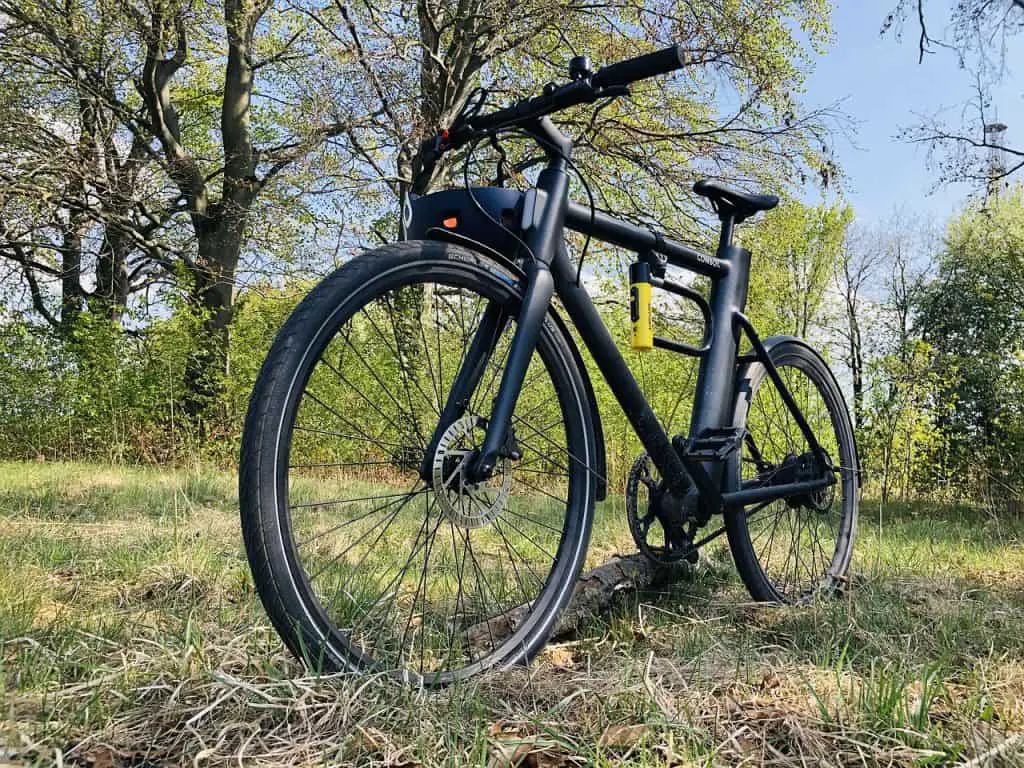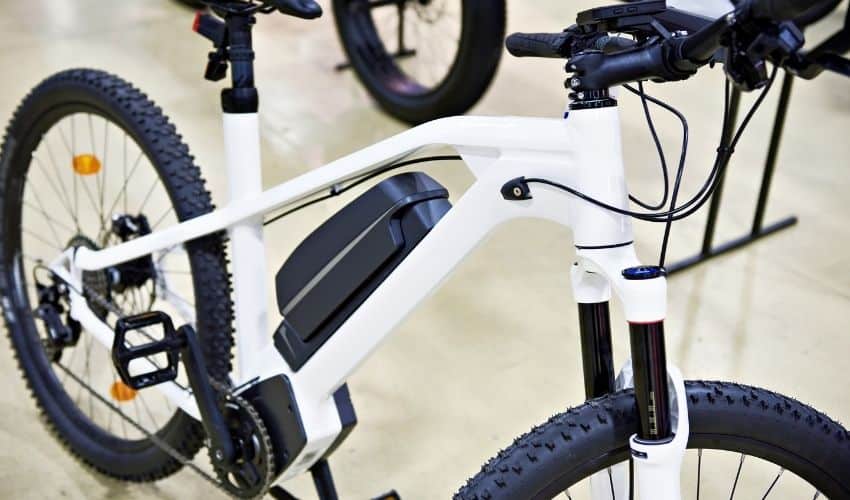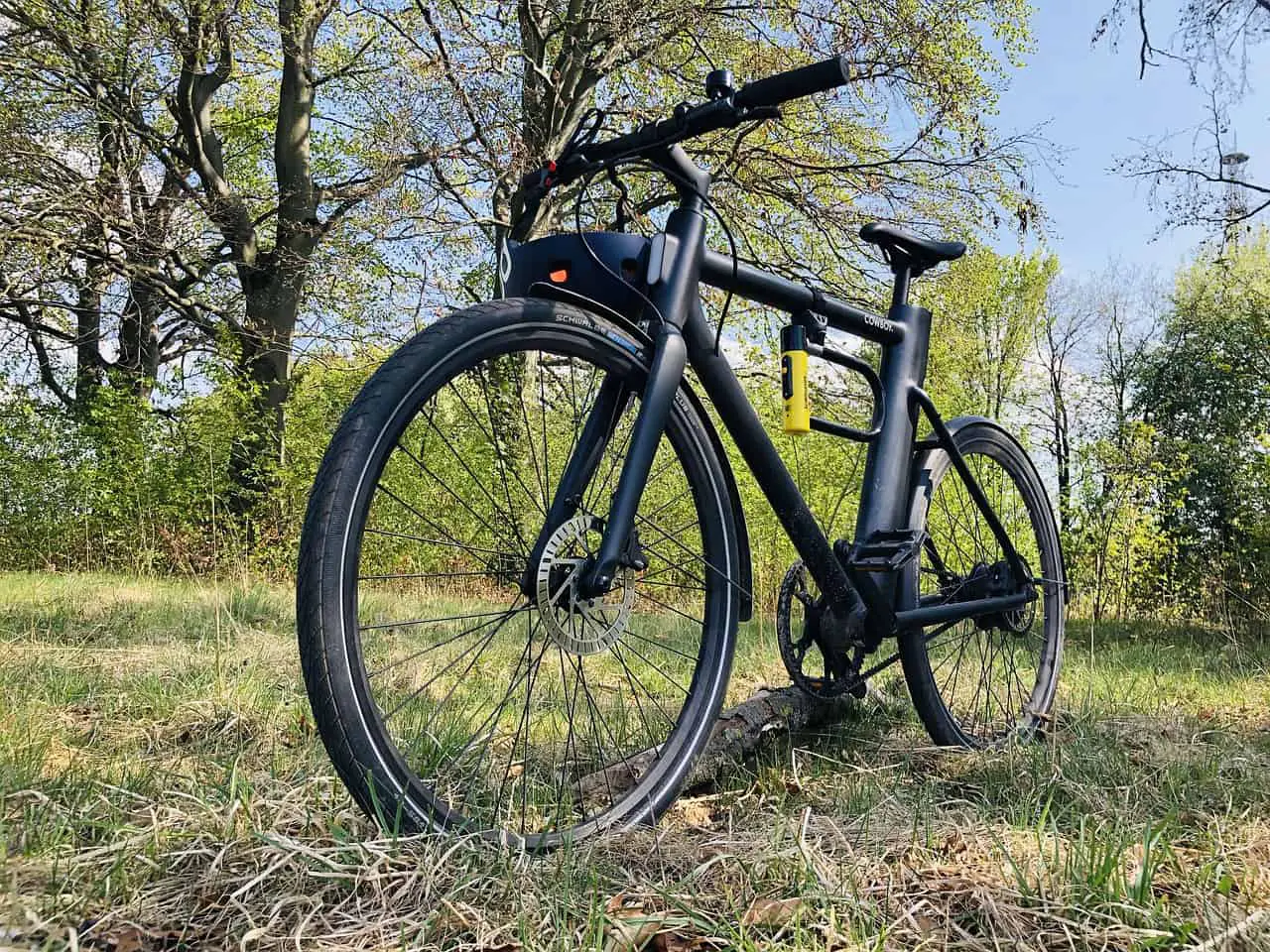We often get asked why electric bikes are so expensive. Most people want premium electric bikes for under $500. Unfortunately, there is no such thing as a high-end electric bike with top speeds of 40mph, torque sensors, huge batteries, and fat tires. Stop searching for one because you won’t find it.
Why Electric Bikes are so Expensive? Here is the list of 6 reasons why Electric Bikes are so Expensive, 1. Cost of an Electric Bike Battery, 2. The Cost of an Electric Bike Motor, 3. Water Resistance, 4. No Economies of Scale, 5. Higher Shipping Costs, 6. Cost of Maintenance.
The price of any commodity is a tradeoff between features and convenience. If you want a high-end electric bike that does it all, you’ll have to be prepared to break bank. Electric bikes are supposed to not only embody the technological changes of 2021 but also withstand considerable punishment.
The crux of the matter is, buying high-end electric bikes is worth it – especially when you consider what you’re getting in return. Electric bikes will probably be the most important part of society going forward, as they reduce our carbon footprint, save transport costs, and improve our fitness levels.
“They’re a whole lot slower than cars, so why waste money on them”?
Let’s get this out of the way so we can discuss the exact reasons why electric bikes are so expensive: if you want something that can offer high-speed thrills and withstand the abuse, you need to invest more money. Besides, you can’t go hiking in a car. An electric bike is more compatible with the logistics involved in off-road adventures and hiking.
The build quality of an electric bike is one of the biggest indicators of price, and we haven’t even begun talking about the battery. Those things can cost 2/3rd the price of an electric bike.
A high-end electric bike will often mean more comfort, fewer inconveniences, and design features that make a daily commute a lot easier.
While it may seem like a foregone conclusion, comfortable electric bikes are super important if you use them to ride for more than just a few hours every day. Sure, we don’t all need self-charging electric bikes, but they certainly feel good. There are a lot of high-end electric bikes out there with creative self-charging batteries that are incredibly convenient, but they’re simply not found in cheaper alternatives.
Moreover, when was the last time you really enjoyed the thrills of cycling for extended periods of time without tiring out within minutes? You probably have your fair share of problems with a traditional cycle, so why not give something that symbolizes how far we’ve come in terms of technology a shot?
Most expensive electric bikes tend to have state of the art battery chargers, good waterproofing, and excellent build quality. You’ll find that they have trustworthy components that last long and make a solid impression on everyone on the road.

Sometimes, electric bike manufacturers also stand behind their work with very generous warranties, even when they’ve undergone quite a bit of punishment. For example, Delfast has a lifetime warranty policy where they will replace the original piece if it ends up breaking out of the blue. On the other hand, good luck trying to break that electric bike, it’s built like a tank.
Of course, this level of durability is going to cost. However, buying something more durable means less money spent if it means you won’t have to replace it every few months.
Check out Can An Electric Bike Replace A Car?
Expensive Electric Bikes Come With Interesting Features
We’re now at a stage in time where the technology for electric bikes is maturing at a rapid pace. It’s the beginning of something truly grand indeed, especially if you’re a cycling enthusiast.
By this we mean: electric bikes are moving away from simply being a vehicle that gets you from point A to point B. Indeed, they augment how we enjoy life itself. Not only are electric bikes getting more complex with new batteries, mid-drive motors, and LCD panels, but they’re also the center point for big innovations in tech.
For example, the latest batteries of tomorrow will be able to take you over 300 miles on a single charge. Delfast already has an electric bike designed exactly for this purpose, the Delfast 3.0 comes with an estimated range of 200 miles.
But you’ll have to be willing to break the bank for advanced features. It is worth pointing out that neither price nor brand guarantees durability. The latest $5000 electric bikes may open to disappointing reviews. This means that before you buy an electric bike, you have to do your due research before spending your hard-earned money.
Understanding Why Electric Bikes are so Expensive
Let’s deep dive into the exact reasons why electric bikes are so expensive.
1) Cost of an Electric Bike Battery
The most probable reason why you want to buy an electric bike is to get around without sweating bullets. The last thing anyone wants is to reach their workplace drenched in sweat. A traditional cycle will have an unlimited range – until your legs give away.
By comparison, your car can travel a much longer distance and refueling only takes a few minutes instead of several hours spet at a docking station.
So the electric bike battery is a key component of the overall cost. It should hold enough charge to travel a useful number of miles and be rechargeable within a few hours (not taking several days).
Main Electric Bike Batteries
While the technology for batteries has come a long way indeed, the industry is leaning towards lithium-ion, with lead-acid being a close second. However, lead-acid batteries, which are also used in cars, are quite heavy and limit your range by quite a lot. They also tend to be a lot cheaper.
Lithium-ion batteries, by comparison, are very similar to those found in smart phones and are widely used in Europe. They are much smaller and are constantly undergoing new innovations.
The main suppliers of Li-ion batteries are Samsung, Panasonic, Sanyo, and LG. You can probably find cheaper manufacturers, but when it comes to electric bike batteries, you get what you pay for.
Pro tip: Before buying an electric bike, think about your needs and preferences. Do you plan on traveling far and frequently? Then the obvious choice is to invest in something like the Delfast 3.0 with a powerful and robust battery.
The battery is quite often the most expensive (and heaviest) component of the electric bike. The sad part is that it will eventually need replacing. A good lithium-ion battery will depend on the manufacturer, but price points start at around $300 or more.
It is worth pointing out that rechargeable batteries will deteriorate over time, same as the batteries on your car. However, if you properly take care of your batteries by following the manufacturer’s advice, it should last you a good 1000 charge cycles.
One charge cycle is when you’ve fully used (or discharged) 100% of your battery.
A lead-acid battery has a shorter life span and will push up the total investment of the electric bike in the long run.
So buying an electric bike with a bad battery, or failing to look after one, will cost you in the long run and make your investment more expensive.
2) The Cost of an Electric Bike Motor
A good electric bike motor is also going to cost an arm and a leg. Standard electric bikes work on 36-volt batteries. If you want more performance, however, then you can go higher with 48 volts, 52 volts, and 72 volts, or even higher battery systems.
The most obvious purpose of the motor is to use energy from the battery to make one (or both) of the wheels turn when you pedal or when you twist the throttle. The exact functionality of the motor depends on whether you have a pedal-assisted electric bike or a throttle assisted electric bike.
If you plan on going up steep hills and off-roading, you will need something that delivers enough power andmakes conservative use of energy when doing so. More power will drain your battery a lot faster, which means you’ll need a good battery. And that’s more money.
The weight of the motor is also something that you have to take into account. Your battery will have to do more work if the motor is heavy.
Most electric bikes use a BMS (or battery management system) that controls the total amp output to the motor. As a general rule, more amps translate into more power.
Types of Electric Bike Motors
Not all electric bike motors are the same. Here are the most common types you should know about.
Mid-Drive
Mid-drive motors are located at the center of the bike, hence the name mid. This motor creates power to rotate a shaft, that in turn, connects to the cycle’s chain.
The mid-drive motor is designed to supplement your own pedaling power when moving the chain drive, instead of acting as the exclusive source of power. They are more complicated (and expensive) than other types of motor and also come with more moving parts (that means more maintenance). In order to get the most use of your electric bike motor, you will need good quality chains since they will be more strain than usual.
In general, mid-drive motors are more suited to mountain e-bikes. They can climb steeper hills by tapping into the electric bike’s motor and gear system.
Hub Direct Drive
Hub direct-drive motors use a simple design but don’t translate into a lot of power or torque compared to mid-drive motors. These motors have no moving parts and simply rotate around the axle. They can also generate some electrical energy when braking. However, it’s nearly not enough to be used to help you on a real journey.
Hub Geared
These motors use gears to increase torque performance and can freewheel. They are more durable, make pedaling more efficient, and have less drag. This allows them to outperform conventional cycles.
However, being able to use the electric bike’s gears can be more complex and more expensive. Using gears is more efficient and uses less battery energy.
On the other hand, you could buy a gearless hub motor if the price bothers you. However, it won’t be nearly as efficient and will have a restricted range. It will also have more wear and tear and could reduce the battery’s lifespan.
3) Water Resistance
Electric bikes that are made with water-resistant sealed components can prevent the general moisture and rain from getting into the motor, battery, and controller. These electric bikes aren’t necessarily waterproof but can be used to cycle in the rain.
However, not all electric bikes have the same tolerance level to moisture. Once the rain gets heavier you’ll wish you had invested in a more water-resistant bike.
These electric bikes are obviously going to cost you more because waterproofing is expensive. Most ‘waterproof’ electric bikes feature IP ratings, such as IP65, IP66, and IP5. Here are a few examples:
- Bafang motors and controllers are usually IP65, which means they’re almost entirely water-resistant and even dustproof
- Most Bafang components are rated IP65
- Bafang Batteries have an IP66 rating
- The Bosch Active Line and Performance Line motors are rated at IP64 – which gives protection from water and dust.
- Shimano Steps Battery have an IPX5 rating
For more information on IP ratings, check out this blog.
4) No Economies of Scale
While it’s true that electric bikes have come a long way in the past several years, they aren’t exactly mainstream. This means that e-bike companies don’t make their products in bulk, which makes it more difficult to get economies of scale.
Economies of scale are savings made from being able to buy lots of supplies. Manufacturers of ordinary cycles can do this reasonably well because they are able a lot more of their inventory. This allows them to buy more parts in larger batches and at better rates from suppliers. They can also hire staff specialized in certain tasks. All of these benefits allow manufacturers of ordinary cycles to reduce the price of their products.
The same isn’t true for electric bike manufacturers because of lower order quantities. This trend may change in the coming years, but for now, the reality is that the electric bike market is still very niche.
5) Higher Shipping Costs
The added weight of the motor and battery can contribute anywhere from 15 to even 40 pounds to the electric bike. All this weight means that shipping costs will be difficult. If your electric bike was delivered to you from the other end of the globe, it will cost you a lot more.
6) Cost of Maintenance
Since electric bikes come with a lot of components, they will be subject to a lot of wear and tear. In general, anything that is mechanical needs regular serving and repairs. This is just as true for electric bikes as it is true for cars.
Consider allocating at least $50 annually for electric bikes, $20 for the braking system per year, and $50 for tires every 2 to 3 years depending on usage.
If you travel over 100 to 200 miles every week, then you may want to have your electric bike serviced twice a year, which may come around to $100. Electric bikes will change brake pads, chains, tires, and other components that may have undergone wear and tear.

Will the Price of Electric Bikes Ever Go Down?
Now that we have discussed why electric bikes are so expensive, it’s time we also discussed the future of this industry. The electric bike market is expected to grow to $20 billion in revenue by 2023, with Acia Pacific being the biggest market.
In 2020-21 electric bikes are still relatively new compared to cars. They sell in smaller volumes than traditional cycles. However, this will change when the technology for electric bikes improves and the volume of sales increase.
Another big factor that will reduce electric bike prices are environmental considerations. Daily commuters are now becoming more conscious of the environment and are trying to ‘go green’. Switching to electric bikes instead of a car will help them achieve this goal.
Note: While electric bikes don’t cost as much to the environment, the electricity needed to charge those batteries may come from traditional power stations that use coal, gas, or oil. With that said, an electric bike is a more ‘greener’ alternative to a fuel-based motorbike or a car.
Check out the below bike articles:
- How to Charge an Electric Bike Battery
- 5 Ways to Charge Your electric Bikes in Remote Areas
- How Long Do Bike Tires Last
Wrapping Up: Are Expensive Electric Bikes Worth the Extra Money?
In this blog, we tried to answer the question, “why electric bikes are so expensive”. First and foremost, they are incredibly convenient to use and just as fun on the road. If you’re enthusiastic about traveling outdoors, then the price point isn’t going to bother you.
The main reason why electric bikes cost a lot more than conventional cycles is because of the expensive components as well as shipping costs. Electric bikes tend to have higher maintenance costs because of regular servicing, replacement of the battery, wear and tear to tires, and all the charging.
This may not seem like a fun way to travel, but everything has pros and cons. It is up to you to decide if the advantages and disadvantages fit your needs perfectly. With that said, it is clear that the future of electric bikes is on the up-and-up and things will only get better from here on out.

I am Michael, an avid rider and bike expert. I am here to provide, biking tips and expert advice on in-depth bike reviews covering features, capabilities, price range, and much more. Specially on electric bikes, mountain bikes, road bikes, etc. I will provide honest product reviews, along with expert advice on purchasing, training, and maintenance. Check out my complete profile.

